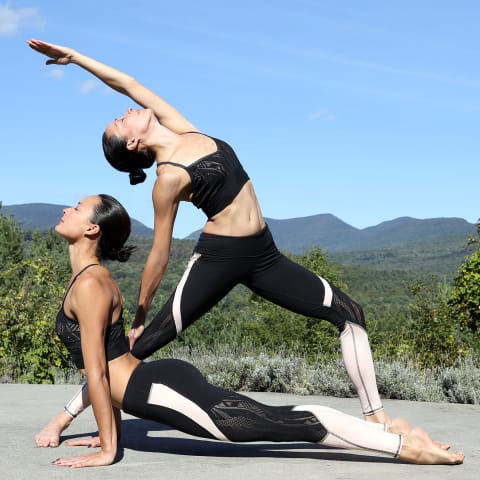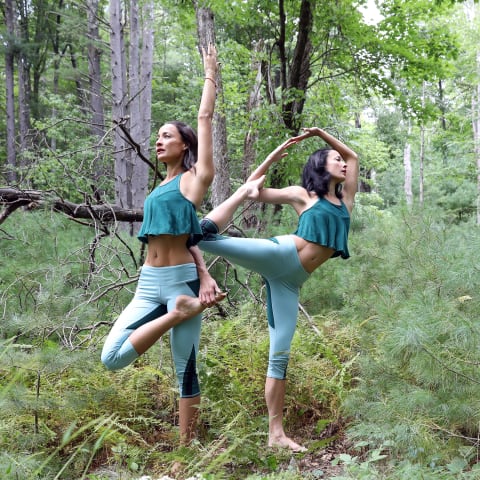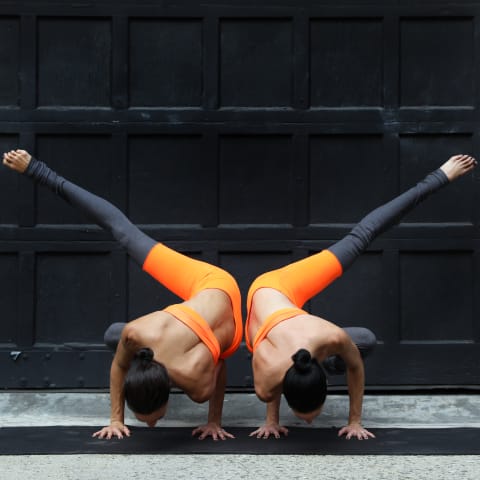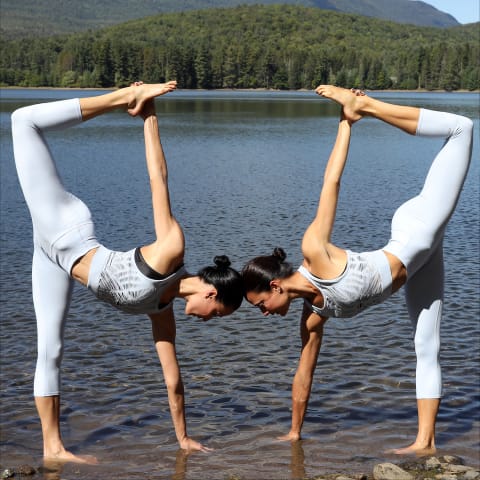Although vayus are subtle, they have a huge impact on how our bodies feel, so learning to move with their natural rhythms is vital for our health. Practicing pranayama and heart-opening asanas will get your prana vayus flowing. If you want to connect with your prana vayu, practice bow pose, camel pose, cobra pose, dancer pose, and bridge pose. Since it is situated in the pelvic floor, its energy pervades the lower abdomen. What we release and let go of in life and in our bodies is just as important as what we receive and take in. The balance of the prana and the apana vayus is the key to having a healthy mind and body. If we release too much, there will not be enough to nourish us. And if we hold everything in, it can become toxic. Much like breathing, we need to find the balance of allowing new life energy in with each inhale and releasing anything that no longer serves us with each exhale. To activate your apana vayu, focus on rooting down in standing poses such as forward folds, which will bring a release to the mind and fill it with a sense of purpose. You can also try seated forward fold, spread-legged standing forward bend, tree pose, and bound angle pose. Samana creates a powerhouse in our core, where we can find balance on and off the mat. Our self-confidence arises from this fire of converging energies, giving us the motivation for real transformation. In our practice, we can activate this life energy by focusing on twists and abdominal work, which will neutralize and fire up the core. Find your center and know all of that power with poses like revolved side-angle pose, crow, chair pose, reclining abdominal twist, and boat pose. This vayu governs speech, expression, and your growth and metabolism through the thyroid glands. The udana vayu is an ascending force, including poses that direct energy to the head, neck, and upper back, and poses that turn the body upside down are good for activating the udana. Just like a well-rounded practice, we warm up the body and often end with an inversion, so we connect with our prana vayu to go inward, our apna vayu to anchor, our samana vayu to unite them, and finally our udana vayu to ascend the mind and body toward a state of deep relaxation and meditation. To connect with the udana vayu, go for fish pose, headstand, shoulder stand, and handstand. This vayu dictates the blood flow and the electrical impulses through our nervous system and the movement of fluid through the lymphatic system. Standing poses are particularly beneficial because they involve movement of every part of the body, from the center outward. As we bring awareness to the expanding energy traveling outward through the body, our minds can drift inward to the source of all prana. We can never master all of the magical energy running through us, but we can try to be aware of how energy is running through us and know that we can tap into this life force. Understand where your energy is taking you and how it is affecting those around you. This article is co-written by Kimmy and Crissy Chin. For more yoga inspiration, find out how doing yoga changed this athlete’s body, and find out what happened during one woman’s 30-day Bikram yoga challenge. As young girls, both sisters shared a love for yoga, ballet, dance, and jazz. Their passion for the arts gave them the grace and poise that was instrumental in their huge success in the fashion industry, as they were often asked to create unique shapes and poses. Kimmy and Crissy are now in their 40s with five children between them, and they’re arguably in the best shape of their lives. Though they now live over 1,000 miles apart, their stories remain intertwined as they emulate each other and continue to share their lives daily, motivating and helping this global community of like-minded people to think and move outside the box. Both certified E-RYT Yoga instructors, these mothers, wives, and sisters are taking the ever-evolving world of health, fitness, and yoga by storm. .







